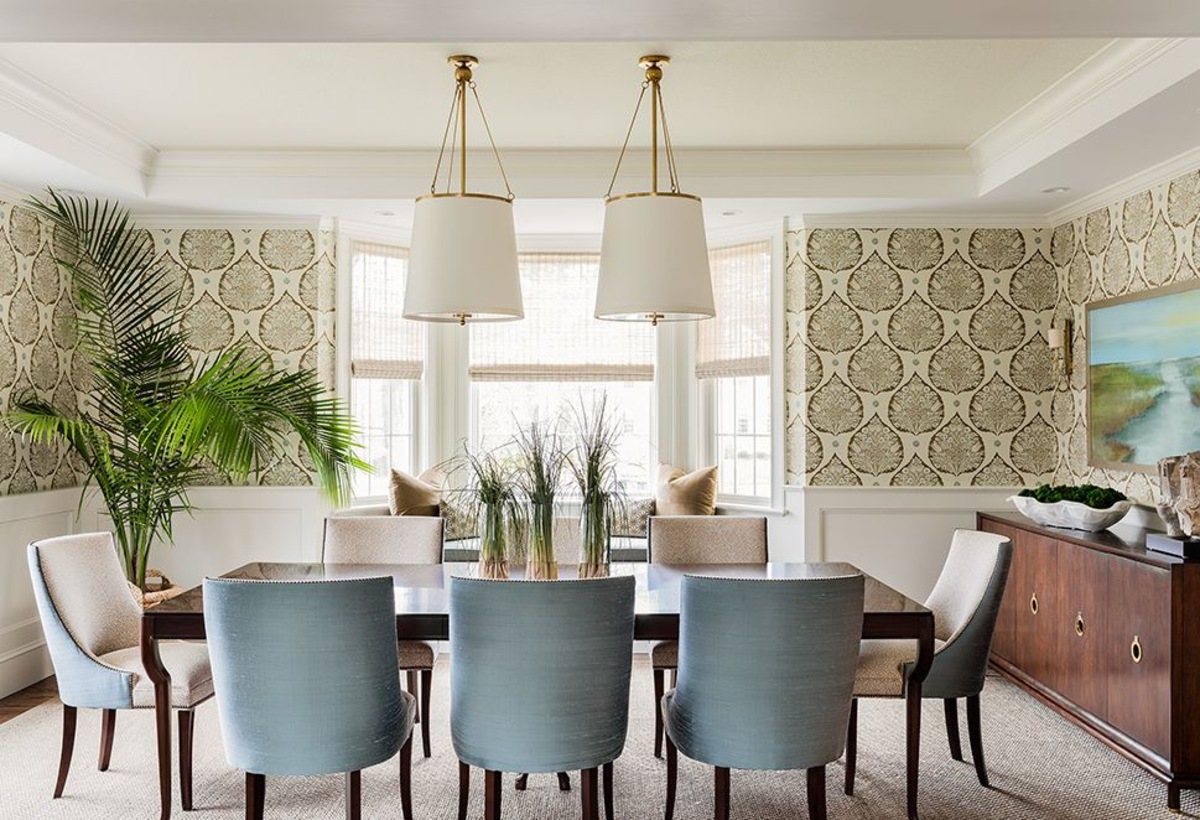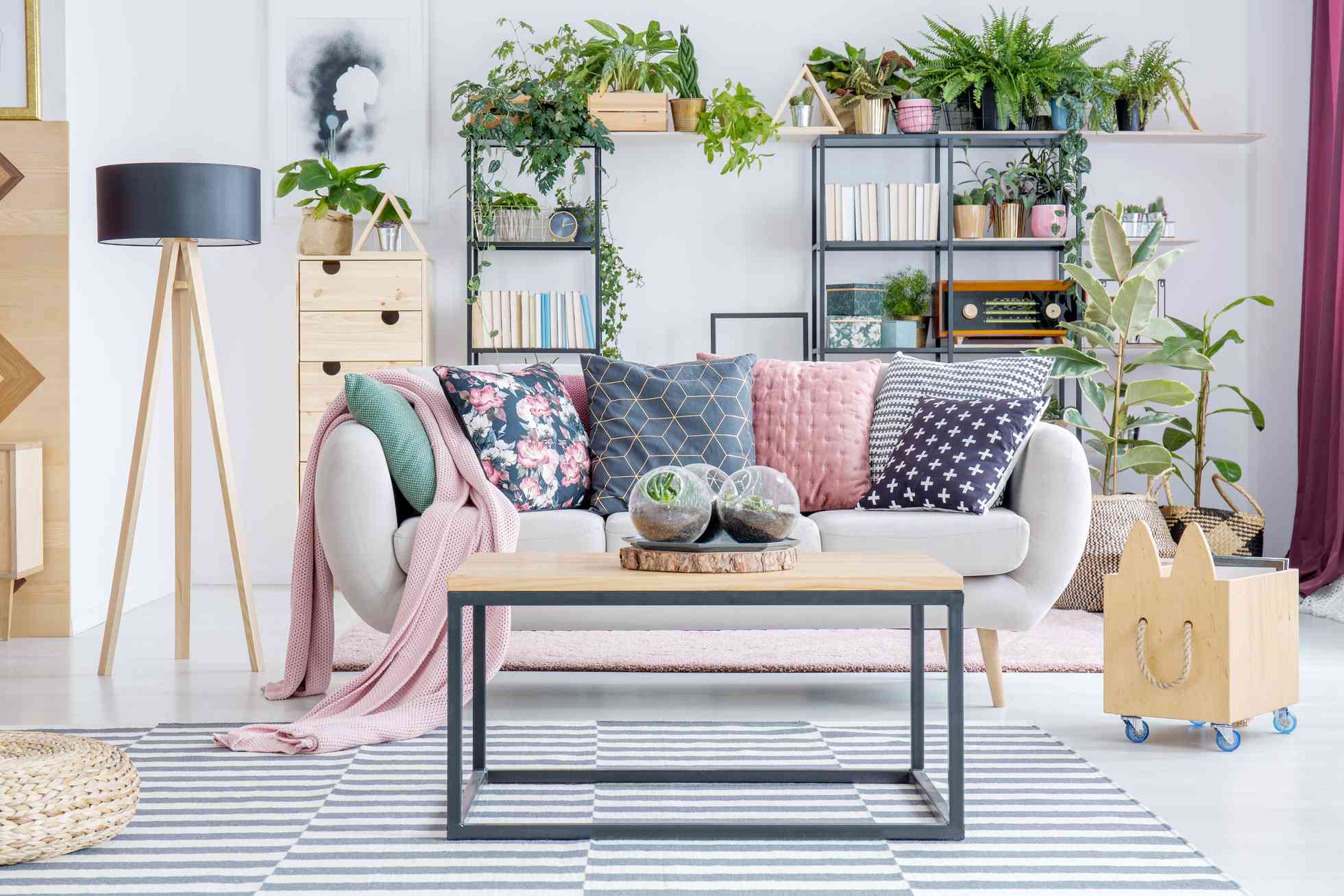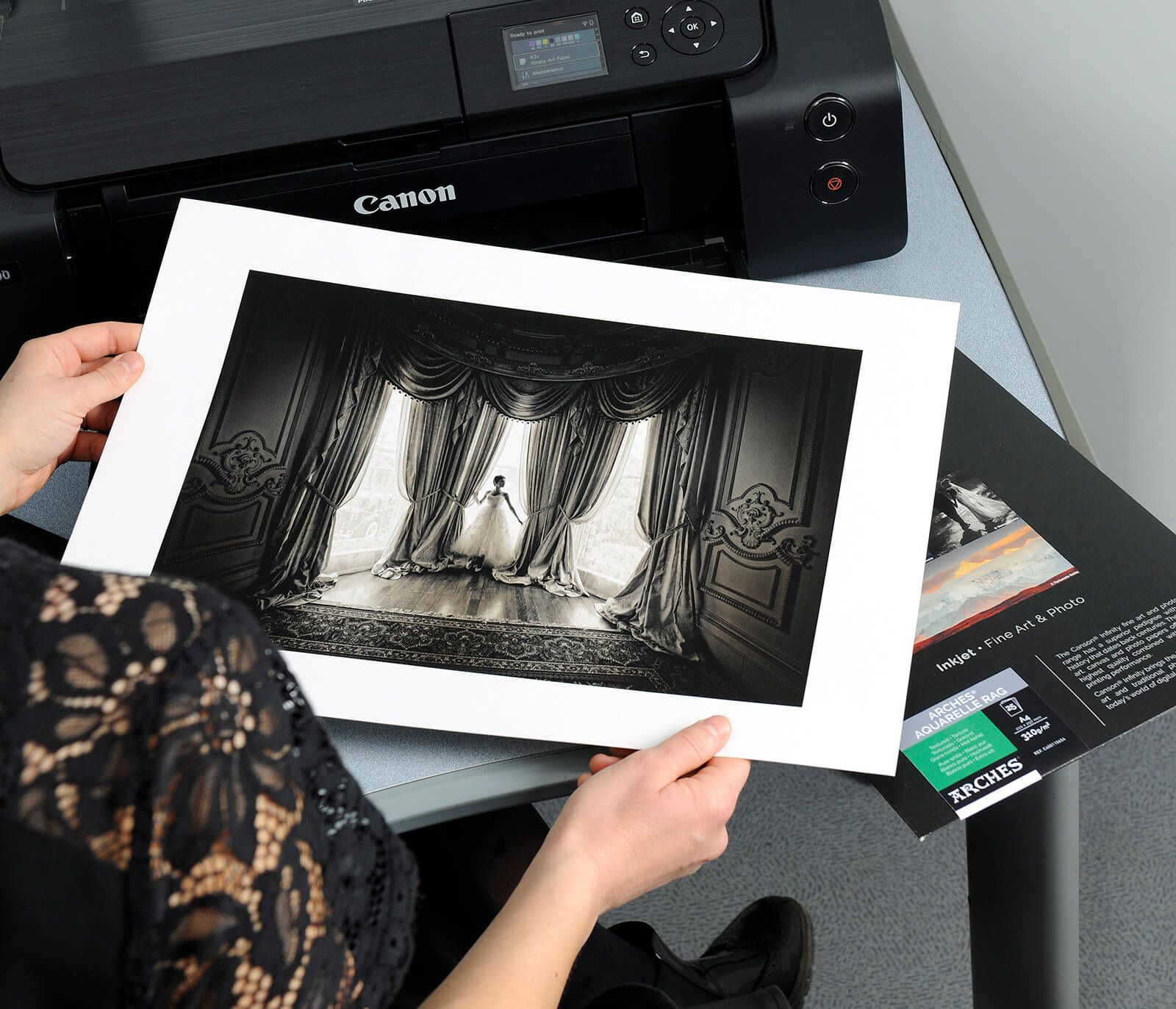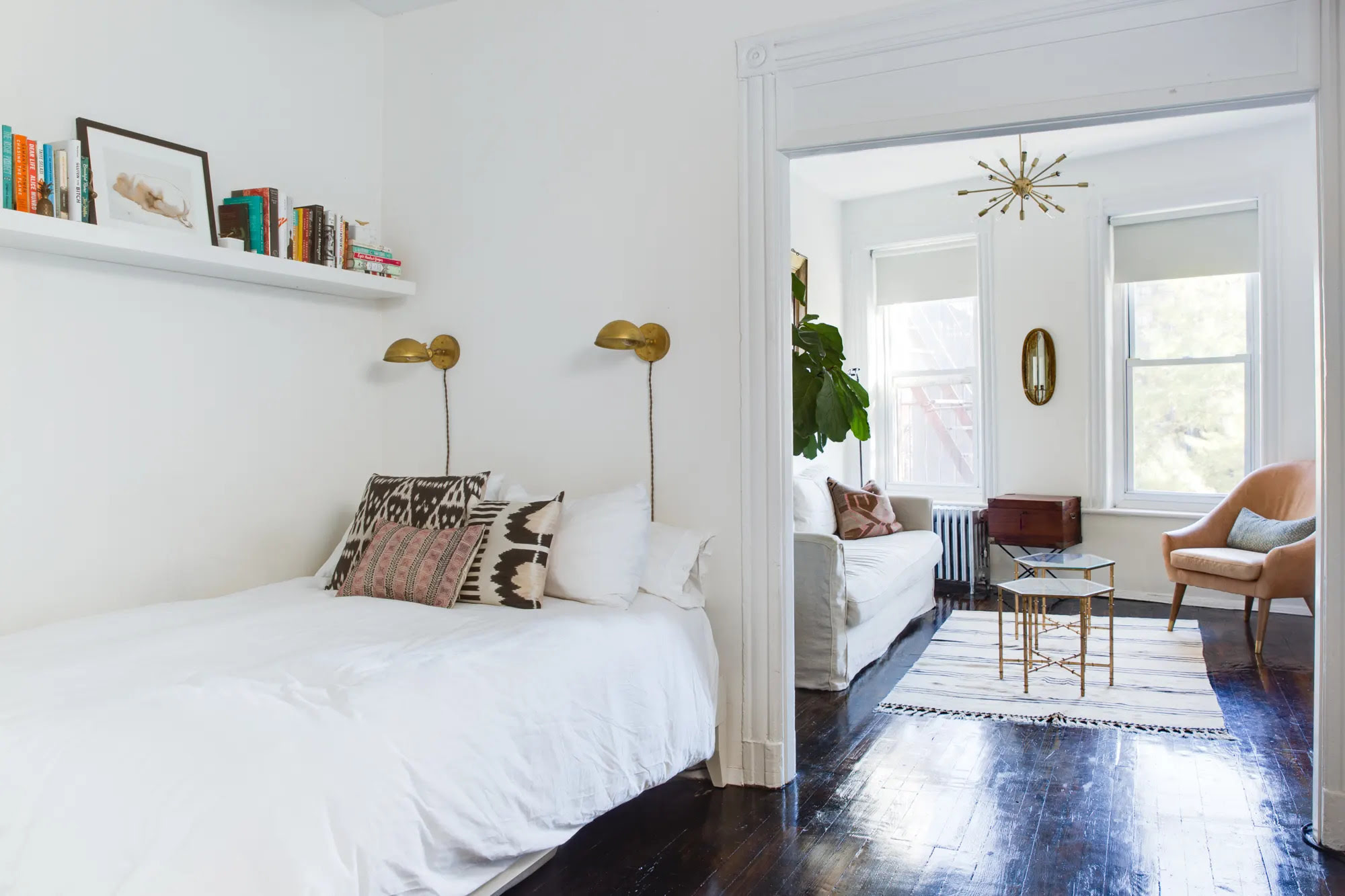Home>Articles>The 11 Most Iconic Wallpaper Prints (and The History Behind Them)
Articles
The 11 Most Iconic Wallpaper Prints (and The History Behind Them)
Modified: January 19, 2024
Discover the history behind the 11 most iconic wallpaper prints in these captivating articles. Explore the rich legacy and timeless appeal of these stunning designs.
(Many of the links in this article redirect to a specific reviewed product. Your purchase of these products through affiliate links helps to generate commission for Storables.com, at no extra cost. Learn more)
Introduction
Wallpaper has been used to adorn walls for centuries, adding beauty and character to homes and spaces. Over time, certain wallpaper prints have become truly iconic, capturing the essence of different eras and styles. From traditional motifs to bold and contemporary designs, these iconic prints continue to make a lasting impression.
In this article, we will explore the history and significance behind 11 of the most iconic wallpaper prints. From toile de Jouy to tropical prints, each design has its own unique story and aesthetic appeal. Join us on this journey as we delve into the world of wallpaper and discover the legacy of these timeless prints.
Key Takeaways:
- Embrace the Timeless Elegance and Whimsical Charm of Iconic Wallpaper Prints
Discover the rich history and captivating allure of iconic wallpaper prints, from the intricate scenes of Toile de Jouy to the playful motifs of Fornasetti. Transform your space with timeless elegance and whimsical charm. - Infuse Your Space with Vibrancy and Exotic Allure Through Iconic Wallpaper Prints
Transport yourself to lush tropical paradises or evoke the glamour of Art Deco with iconic wallpaper prints. From vibrant Hawaiian motifs to captivating trompe-l’oeil illusions, infuse your space with vibrancy and exotic allure.
Toile de Jouy
Toile de Jouy, or simply Toile, is a classic French print that originated in the 18th century. It is characterized by its intricate, often pastoral scenes depicted on a single-colored or lightly patterned background. The prints typically feature idyllic landscapes, historical narratives, or charming vignettes.
Created by Christophe-Philippe Oberkampf in the small town of Jouy-en-Josas, near Paris, Toile de Jouy became popular during the Rococo and Neoclassical periods. The prints were initially inspired by India’s textile traditions, particularly its intricate hand-block printing techniques. Oberkampf perfected and adapted these techniques to create his own unique style.
Toile de Jouy gained widespread recognition when it became the choice print for upholstery and wallpaper in French country estates, including the Palace of Versailles. Its delicate motifs and romanticized scenes captured the imagination of the French elite, and it soon spread across Europe, becoming a symbol of sophistication and elegance.
Throughout the years, the appeal of Toile de Jouy has remained steadfast. The timeless charm and intricate detailing of the prints continue to captivate designers and homeowners alike. Toile de Jouy wallpapers can create a sense of refined luxury in any space, whether it be a traditional or contemporary setting.
Modern iterations of Toile de Jouy have expanded beyond the classic blue and white color palette, embracing a wider range of colors and themes. From soft pastels to bold hues, designers have reimagined the print to suit different interior aesthetics.
Whether used as a feature wall or covering an entire room, Toile de Jouy adds a touch of history and romance to any space. Its delicate scenes evoke a sense of tranquility and elegance, transporting us to a bygone era. It is no wonder that Toile de Jouy remains an iconic wallpaper print, standing the test of time and continuing to inspire designers and decorators around the world.
William Morris Prints
William Morris prints are synonymous with the Arts and Crafts movement of the late 19th century. Created by British textile designer, poet, and social activist William Morris, these prints revolutionized the world of wallpaper and interior design.
Morris was inspired by the natural world, and his prints often featured intricate floral motifs, birds, and foliage. He believed in the importance of craftsmanship and handiwork, and his designs reflected this ethos. The wallpapers were produced using traditional printing methods, with each color being meticulously applied by hand.
One of Morris’s most renowned designs is “Strawberry Thief,” featuring birds stealing strawberries from a garden. This print, like many of his others, showcases his attention to detail and his ability to capture the beauty of the natural world.
What sets William Morris prints apart is his commitment to creating a total work of art. Morris believed that the design of the wallpaper should extend to the entirety of the room, encompassing not only the walls but the furniture and furnishings as well. This holistic approach to design revolutionized interior aesthetics and inspired generations of designers.
Today, William Morris prints continue to be highly sought after. They bring a sense of nostalgia and timeless beauty to any space. Whether you choose a richly colored floral pattern or a more subtle and muted design, Morris’s prints elevate the atmosphere of a room, adding depth, texture, and a touch of nature’s splendor.
Many contemporary designers pay homage to William Morris in their own creations, incorporating his motifs and principles into their designs. The enduring appeal and influence of Morris’s prints are a testament to their timeless and captivating beauty.
When you choose a William Morris wallpaper, you are not only adding a stunning visual element to your space, but you are also paying tribute to the legacy of an extraordinary designer who shaped the way we perceive and appreciate interior design.
Chinoiserie
Chinoiserie is a decorative style that emerged in Europe during the 17th and 18th centuries. It is inspired by Chinese art and culture, but it is important to note that it is a European interpretation rather than an authentic representation of Chinese design.
The term “Chinoiserie” literally means “Chinese-esque” in French. It became popular during a time when Europe saw a rise in trade with China, and it reflected a fascination with the exotic and the unknown. The prints often featured intricate scenes of Chinese landscapes, pagodas, figures in traditional attire, and mythical creatures.
Chinoiserie wallpapers were highly coveted among the European elite, particularly in France and England. They were seen as a symbol of wealth, taste, and sophistication. Many royal palaces and stately homes showcased Chinoiserie wallpapers, adding an air of opulence and refinement to their interiors.
During the 19th century, Chinoiserie fell out of favor as other design styles took precedence. However, it experienced a revival in the early 20th century and remains popular to this day. Modern interpretations of Chinoiserie incorporate a fusion of Eastern and Western elements, blending traditional Chinese motifs with contemporary design sensibilities.
Chinoiserie wallpapers bring a sense of drama and exoticism to any space. The intricate details and vibrant colors create a visually stunning backdrop that can transform a room into an enchanting escape. Whether used sparingly as an accent or covering an entire wall, Chinoiserie wallpapers are sure to make a bold statement.
So, if you’re looking to add a touch of elegance and mystique to your home, consider incorporating a Chinoiserie wallpaper. Its timeless charm and captivating designs will transport you to a world of oriental beauty and create an unforgettable ambiance in your space.
Hawaiian Prints
Hawaiian prints, also known as “Tropical prints,” evoke the vibrant and laid-back atmosphere of the Hawaiian Islands. These prints are characterized by their bold and colorful motifs, featuring tropical flowers, foliage, and oceanic elements.
Hawaiian prints gained popularity in the mid-20th century and became synonymous with the Hawaiian shirt, or “aloha shirt.” The shirts, adorned with vibrant prints, became an iconic symbol of island style and leisurely living.
One of the most recognizable Hawaiian print designs is the hibiscus flower. This flower is deeply rooted in Hawaiian culture and represents beauty, hospitality, and the essence of the islands. Other popular motifs found in Hawaiian prints include palm trees, pineapples, tropical birds, and waves.
The exuberant and joyful energy of Hawaiian prints makes them ideal for creating a playful and vibrant atmosphere in any space. Whether used as wallpaper or incorporated into home decor items such as pillows or curtains, these prints add a touch of tropical paradise to your surroundings.
In recent years, Hawaiian prints have experienced a resurgence in popularity and have expanded beyond the realm of fashion. From beach cottages to urban apartments, homeowners are embracing the lively and carefree nature of Hawaiian prints to bring a touch of paradise into their own spaces.
When decorating with Hawaiian prints, it’s important to strike a balance. Incorporate the prints in a way that complements the overall aesthetic of the room without overwhelming the space. Pair them with natural elements like rattan furniture or woven textures to create a harmonious tropical vibe.
So, if you’re longing for a taste of island life, consider incorporating Hawaiian prints into your home decor. These prints will transport you to a sunny and relaxed state of mind, where the beauty of the tropics is never far away.
Art Deco
Art Deco is a design style that emerged in the 1920s and 1930s, known for its bold geometric shapes, glamorous motifs, and luxurious materials. It was a reaction against the ornate and intricate styles of the past, embracing a more streamlined and modern aesthetic.
Art Deco prints often feature symmetrical patterns, sunbursts, zigzags, and stylized representations of nature. The designs are characterized by their strong colors, including rich jewel tones and metallic accents. They exude a sense of sophistication and opulence.
During its heyday, Art Deco was incredibly influential in interior design, architecture, and the decorative arts. The prints were often used in wallpaper and upholstery, transforming spaces into dazzling showcases of modernity and luxury.
The enduring appeal of Art Deco lies in its ability to blend bold and dramatic design elements with a sense of elegance and glamour. By incorporating Art Deco prints into your space, you can create an atmosphere that is both visually striking and sophisticated.
Art Deco wallpapers can be the focal point of a room, adding depth and visual interest to the walls. They can also be used more subtly as accent walls, enhancing the overall ambiance without overpowering the space.
To complement Art Deco prints, incorporate sleek and angular furniture, mirrored surfaces, and luxurious materials such as velvet and satin. Choose lighting fixtures with geometric shapes and metallic finishes to further enhance the Art Deco aesthetic.
Art Deco continues to inspire designers and homeowners today, as its timeless elegance and bold design elements have cemented its place in design history. By embracing Art Deco prints in your home, you can infuse your space with a touch of glamour and pay homage to this iconic design style.
Scenic Wallpaper
Scenic wallpaper is a type of wallpaper that depicts picturesque landscapes, panoramic views, or scenes from nature. It allows homeowners to bring the beauty of the outdoors into their living spaces, creating a sense of escape and tranquility.
Scenic wallpaper has a long history, dating back to the 18th century when it gained popularity in wealthy European homes. The prints often depicted idyllic countryside scenes, grand landscapes, or exotic locales. These immersive wallpapers allowed homeowners to surround themselves with scenes of beauty and wonder.
One of the most renowned scenic wallpaper designs is “The Dufour Scenic Wallpaper” produced by Jean-Baptiste Réveillon and Dominique Dufour. This wallpaper, created in the late 18th century, depicted a panoramic landscape showcasing a beautiful countryside.
Scenic wallpapers continued to evolve over the years, reflecting changing tastes and design trends. From bucolic landscapes to tropical paradises, these wallpapers offer a wide range of options to suit various interior styles.
Today, scenic wallpapers continue to captivate homeowners and designers alike. They can transform a room into a captivating retreat, creating a sense of serenity and visual interest.
When incorporating scenic wallpaper into your space, consider the scale and placement of the print. Larger prints may work well as a focal point on one wall, while smaller prints can be used to create a cohesive look throughout the room.
Scenic wallpapers can be an excellent choice for bedrooms, living rooms, or dining rooms, where you want to evoke a sense of peace and escape. They can also be used in unexpected spaces, such as hallways or bathrooms, to create a dramatic and immersive experience.
By choosing scenic wallpaper, you can transform your walls into works of art, creating an enchanting and captivating atmosphere within your home.
When choosing an iconic wallpaper print, consider the history and cultural significance behind the design to add depth and meaning to your space.
Fornasetti
Fornasetti is a renowned Italian design brand that has gained prominence for its distinctive and whimsical wallpaper prints. Founded by Piero Fornasetti in the 20th century, the brand is known for its unique combination of surrealism, humor, and elegance.
The Fornasetti wallpaper prints often feature intricate and repetitive motifs, such as faces, hands, suns, and architectural elements. These prints create a mesmerizing visual effect, adding depth and character to any space.
What sets Fornasetti wallpapers apart is their ability to evoke a sense of playfulness and intrigue. The repeated motifs, combined with a monochromatic or limited color palette, create a visually striking and timeless aesthetic.
Piero Fornasetti was deeply influenced by classical art and architectural elements. His prints often reference ancient Greek and Roman sculptures, offering a unique twist on traditional motifs.
Today, Fornasetti wallpapers are highly sought after by design enthusiasts and collectors. They are versatile and can be used in a variety of interior settings, from modern and minimalist spaces to eclectic and maximalist designs.
When using Fornasetti wallpapers, it’s essential to consider the overall design concept of the room. These prints can make a bold statement, so it’s often best to use them as an accent wall or in smaller areas, such as a powder room or hallway.
The charm of Fornasetti wallpapers lies in their ability to spark curiosity and conversation. They add a touch of whimsy and artistic flair to any space, making them a popular choice for those seeking a unique and unconventional design aesthetic.
By incorporating Fornasetti wallpapers into your home, you can create a truly distinctive and captivating environment that reflects your love for art, design, and the extraordinary.
Mid-Century Modern
Mid-Century Modern wallpaper is an iconic design style that emerged in the mid-20th century and continues to be beloved for its sleek, clean lines and timeless appeal. It embodies the optimism and innovation of the post-World War II era and has made a significant impact on interior design.
The prints in Mid-Century Modern wallpapers often feature geometric patterns, abstract forms, and bold colors. These designs reflect the influence of the Bauhaus movement and the principles of modernism, prioritizing functionality, simplicity, and minimalism.
Mid-Century Modern wallpapers are characterized by their ability to create a sense of open and airy spaces. The designs can make rooms feel larger and more spacious, enhancing the overall aesthetic of a mid-century-inspired interior.
One of the most notable features of Mid-Century Modern wallpapers is their use of vibrant and warm colors. From mustard yellow to avocado green and burnt orange, these colors evoke the nostalgia of the era and add a touch of retro charm to any space.
Whether you choose a bold geometric pattern or a more subtle abstract design, Mid-Century Modern wallpapers have the power to instantly transform a room. They can create a sense of visual interest and energy, setting the stage for a stylish and sophisticated interior.
When incorporating Mid-Century Modern wallpapers into your space, consider pairing them with sleek and minimalist furniture. The clean lines and organic forms of mid-century furniture complement the geometric patterns and bold colors of the wallpaper, creating a cohesive and visually pleasing look.
Mid-Century Modern wallpapers have stood the test of time and continue to be a popular choice among homeowners and designers alike. They capture the essence of an era marked by innovation, optimism, and a focus on functional design.
By incorporating Mid-Century Modern wallpapers into your home, you can create a stylish and retro-inspired interior that pays tribute to this iconic design movement.
Geometric Prints
Geometric prints are a versatile and popular choice in wallpaper design. With their clean lines, symmetrical shapes, and repetitive patterns, geometric prints bring a sense of structure and visual interest to any space.
Geometric prints can take many forms, ranging from simple shapes like squares and triangles to intricate and complex patterns. They can be bold and attention-grabbing or subtle and understated, depending on the desired effect.
One of the great advantages of geometric prints is their ability to complement various interior styles. They work well in modern, minimalist, and contemporary settings, adding a touch of sophistication and modernity to the space. In more traditional or eclectic interiors, geometric prints can create an interesting juxtaposition, adding a contemporary twist to the overall aesthetic.
When incorporating geometric prints into your space, consider the scale and placement of the pattern. Larger prints can make a bold statement and work well as a focal point, while smaller, more intricate patterns can create depth and visual texture when used on multiple walls or in larger spaces.
Geometric prints also offer endless opportunities for color experimentation. Whether you opt for a monochromatic color scheme to create a subtle and sophisticated look, or choose bold and contrasting colors to make a statement, the possibilities are endless.
Additionally, geometric prints can be used to create an optical illusion and visually alter the perception of a room. For example, vertical stripes can make a ceiling appear higher, while horizontal stripes can create a sense of width.
Geometric prints are not limited to just walls; they can be used on furniture, textiles, and accessories to create a cohesive and visually appealing look. Mixing and matching different scales and shapes of geometric patterns can add depth and interest to the overall design.
Whether you prefer a contemporary and bold look or a subtle and sophisticated atmosphere, geometric prints have the power to transform your space. With their timeless appeal and wide range of options, they are sure to make a statement in any interior design project.
Tropical Prints
Tropical prints have the ability to instantly transport us to exotic and lush destinations, evoking feelings of relaxation and escape. These prints are characterized by vibrant colors, bold botanical motifs, and a celebration of tropical flora and fauna.
Tropical prints gained popularity in the mid-20th century, during the golden age of travel. They were often associated with luxurious resorts, beachside bungalows, and the carefree lifestyle of tropical destinations.
Common tropical motifs include palm leaves, exotic flowers like hibiscus and birds-of-paradise, playful pineapples, and tropical animals such as flamingos and toucans. These prints are typically depicted in vibrant shades of green, blue, yellow, and coral.
Tropical prints are versatile and can be incorporated into a wide range of interior styles. They add a refreshing and lively touch to both modern and traditional spaces, infusing them with a sense of the exotic. From tropical-themed bedrooms to vibrant living rooms, these prints create a tropical oasis in the comfort of your own home.
When using tropical prints on wallpaper, consider the scale and placement of the pattern. Larger and more intricate prints may work well as a focal point on one wall, while smaller prints can be used to create a cohesive look throughout the room.
To complete the tropical aesthetic, pair tropical prints with natural materials like rattan furniture, bamboo accents, and plenty of lush greenery. This combination creates a seamless transition between the indoor and outdoor spaces, bringing the beauty of nature inside.
Whether you’re creating a beach-inspired retreat or simply want to infuse your home with a touch of paradise, tropical prints are an excellent choice. They bring a sense of warmth, vibrancy, and relaxation to any space, reminding us of the beauty and serenity found in tropical destinations.
Trompe-l’oeil
Trompe-l’oeil, meaning “deceive the eye” in French, is a captivating wallpaper print style that creates the illusion of three-dimensional space or objects on a two-dimensional surface. This artistic technique has been used for centuries to trick the viewer’s perception and create a sense of depth and realism.
Trompe-l’oeil wallpapers are designed to imitate various materials or architectural elements, such as stone, wood, bookshelves, doors, or windows. The prints are so skillfully executed that they can often be mistaken for the real thing, fooling the eye and creating a remarkable visual effect.
One of the key benefits of trompe-l’oeil wallpapers is their ability to transform a room, making it feel larger or adding architectural features that do not actually exist. They can create the illusion of grandeur, open up a space, or provide a unique and whimsical focal point.
When choosing trompe-l’oeil wallpapers, consider the desired effect you want to achieve. Opt for designs that complement the overall aesthetic of your space and enhance the existing architectural features. For example, a trompe-l’oeil bookshelf print can add depth and character to a study or library.
Trompe-l’oeil wallpapers are versatile and can be used in a variety of settings, from residential to commercial spaces. They are particularly effective in creating visual interest in areas that lack architectural detail or have limited space.
When installing trompe-l’oeil wallpapers, it’s essential to ensure proper lighting and positioning to enhance the illusion. Strategic placement of lighting fixtures can further accentuate the depth and realism of the print, adding to the overall impact.
Whether you choose to incorporate trompe-l’oeil wallpapers as a focal point or use them to enhance architectural features, they are sure to captivate and engage viewers. These optical illusions add a touch of artistic intrigue and create a unique and memorable experience within your space.
By incorporating trompe-l’oeil wallpapers, you can transform plain walls into breathtaking works of art, adding depth, character, and a touch of whimsy to your home or commercial environment.
Conclusion
Wallpaper prints have the power to transform a space and evoke different emotions and atmospheres. From the timeless elegance of Toile de Jouy to the whimsical charm of Fornasetti, each wallpaper print carries its own unique history, style, and aesthetic appeal.
Whether you’re drawn to the intricate scenes of Toile de Jouy, the nature-inspired designs of William Morris, or the exotic allure of Chinoiserie, there is a wallpaper print to suit every taste and interior style.
From Hawaiian prints that bring a touch of tropical paradise to Mid-Century Modern patterns that exude sophistication, each iconic wallpaper print offers a distinct visual impact. Geometric prints add a contemporary and dynamic touch, while scenic wallpapers transport us to breathtaking landscapes.
Trompe-l’oeil wallpapers challenge our visual perception, creating optical illusions that deceive the eye, while tropical prints infuse our spaces with the vibrant charm of lush and exotic destinations.
When choosing a wallpaper print, consider the overall design concept of your space and the ambiance you wish to create. Whether you’re aiming for elegance, playfulness, tranquility, or a touch of nostalgia, the right wallpaper print can help you achieve your desired aesthetic.
Remember to balance your design choices, incorporating wallpapers as focal points, accent walls, or in smaller areas to enhance the overall atmosphere without overwhelming the space.
By embracing iconic wallpaper prints, you can transform your home or commercial space into an extraordinary haven that reflects your personal style and tells a story of design legacy and inspiration.
So, indulge in the world of wallpaper prints and let them become the artistic backdrop that sets the stage for a truly captivating and unparalleled interior experience.
Frequently Asked Questions about The 11 Most Iconic Wallpaper Prints (and The History Behind Them)
Was this page helpful?
At Storables.com, we guarantee accurate and reliable information. Our content, validated by Expert Board Contributors, is crafted following stringent Editorial Policies. We're committed to providing you with well-researched, expert-backed insights for all your informational needs.






0 thoughts on “The 11 Most Iconic Wallpaper Prints (and The History Behind Them)”